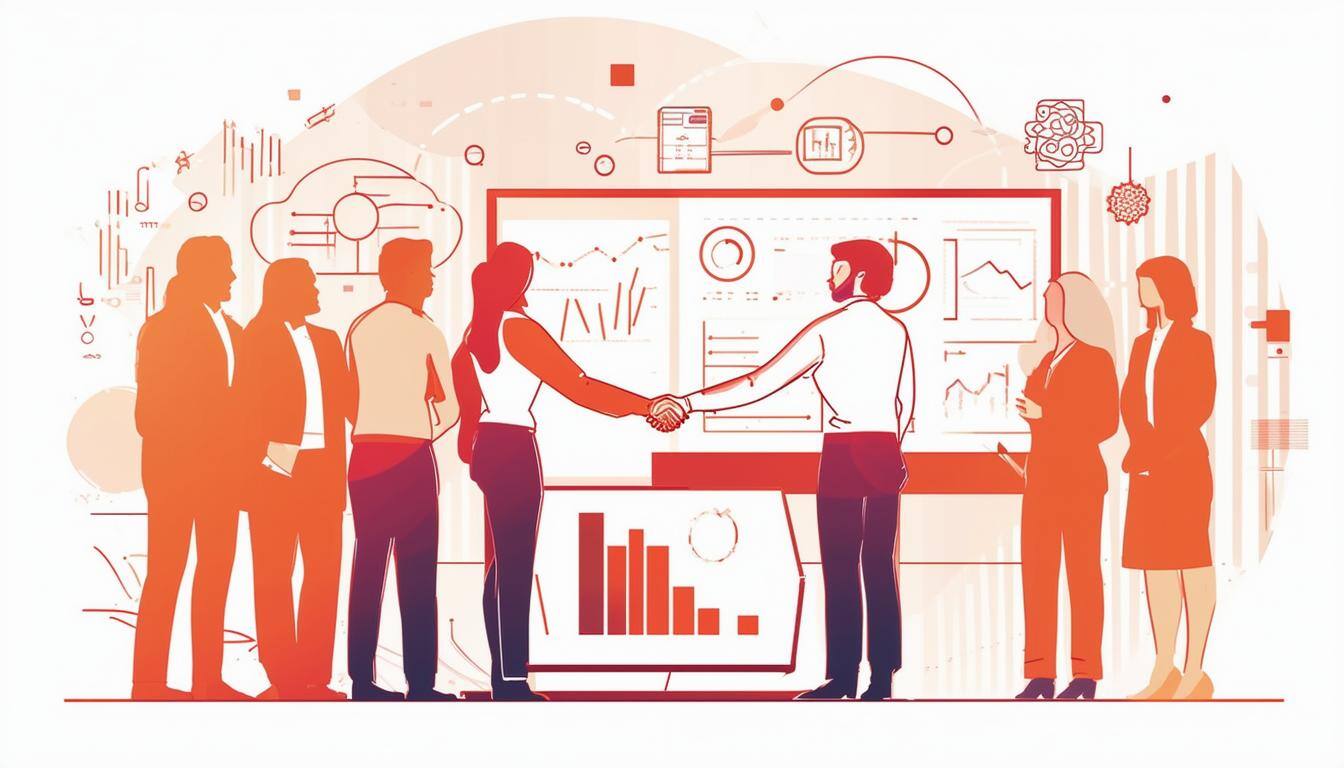We don’t talk enough about how often women second-guess themselves—not because they lack knowledge...
Turning Events into Revenue: Optimizing Post-Event Outreach
In-person events are back in full swing, and companies are once again pouring significant budgets into booths, sponsorships, dinners, and elaborate experiences designed to attract and engage their ideal audiences. But while the energy at these events often leads to packed booths and high engagement, one critical question remains: Are marketers fully extracting the ROI from these efforts?
For many organizations, the answer is no. Despite the heavy investments, post-event follow-ups often fall short, leaving potential revenue untapped and leads left to grow cold. It doesn’t have to be this way.
Let's dive into how marketers can create a well-organized, data-driven plan for after the event to really boost ROI and transform all that event excitement into tangible results.
The Hidden ROI in Post-Event Follow-Up
It’s no secret that events create opportunities to connect with customers and prospects in ways digital campaigns can’t replicate. But the real value of an event lies not in the number of booth visitors or business cards exchanged but in what happens after the event ends.
According to Bizzabo, 87% of marketers believe in-person events are critical to their company’s success. However, only a fraction of marketers feel confident in their ability to measure event ROI effectively. The post-event period is a critical time to act, yet many teams miss this window due to unstructured processes, delays in follow-up, or generic outreach that fails to capitalize on the personalized connections made at the event.
The reality is this: The event isn’t truly over when the last attendee leaves. The follow-up is what transforms conversations into conversions.
Common Pitfalls in Post-Event Marketing
Before exploring solutions, let's look at some typical mistakes that cause teams to miss out on potential revenue:
- Unstructured Follow-Up: Many event leads are simply dumped into a CRM without prioritization or proper segmentation, resulting in one-size-fits-all outreach.
-
Missed Timing: Delayed follow-ups allow the excitement and connection from the event to fade. Prospects move on, and your brand risks losing top-of-mind awareness.
-
Siloed Approaches: Marketing teams often lack alignment with sales on who owns the follow-up and what the messaging should include. This disjointed approach can result in opportunities slipping through the cracks.
-
Lack of Personalization: Personalization is no longer optional—80% of consumers are more likely to make a purchase when brands offer tailored experiences. Generic follow-ups ignore the unique experiences and interests expressed by your leads.
A Framework for Post-Event Revenue Generation
To maximize ROI, marketers need a strategic and structured post-event follow-up plan. Here’s a framework to get started:
- Real-Time Data Capture: Use tools to track booth visits, session attendance, and attendee engagement in real time. Capturing this data ensures you know who engaged and how they interacted with your brand.
- Immediate Prioritization: Segment leads based on engagement level. For example, prioritize attendees who visited your booth multiple times, engaged in a live demo, or participated in a VIP dinner.
-
Automated, Personalized Follow-Up: Set up workflows to send personalized emails or texts within 24 hours of the event. Tailor messaging to reflect the attendee’s specific experience, such as mentioning a session they attended or a question they asked.
-
Integrated Sales Alerts: Notify sales reps of high-priority leads with context about their event interactions (e.g., “This lead attended our breakout session on AI and asked about pricing”).
-
Nurture Campaigns: For less-engaged leads, enroll them in nurture sequences to keep your brand top-of-mind while slowly warming them up for future conversations.
How Decision Intelligence Platforms Can Help
Marketers don’t have to build this process alone. Decision intelligence platforms like iCustomer offer the tools needed to streamline and enhance post-event follow-up strategies. Here’s how:
-
Segmentation & Scoring: AI-powered analytics can rank leads by propensity to convert, allowing teams to focus on high-value opportunities.
-
Workflow Automation: Automate follow-up actions, such as sending personalized emails or triggering sales tasks, to ensure no lead slips through the cracks.
-
Data Enrichment: Enrich attendee profiles with data from multiple sources, providing deeper insights to personalize outreach.
-
Attribution Analytics: Track which follow-up actions directly lead to conversions, proving ROI and identifying areas for improvement.
For example, imagine an enterprise SaaS company that used iCustomer to manage its post-event follow-up after a major industry conference. Within 48 hours, 80% of leads received personalized follow-ups based on their session attendance and booth interactions. This automated approach resulted in a 40% increase in booked meetings compared to their previous manual efforts.
The Path to Better ROI
In-person events offer unparalleled opportunities for businesses to connect with prospects and customers. But the value of these events is fully realized only when marketers execute a thoughtful, data-driven follow-up strategy. According to Salesforce’s State of Marketing Report, automated workflows and real-time segmentation can significantly reduce lead decay and improve conversion rates.
The next time your team is planning an event, remember: The end of the event is just the beginning. What you do afterward can make all the difference.
.png?width=267&height=52&name=Jen_Spencer_Strategy_Logos_Light-Long%201%20(1).png)




